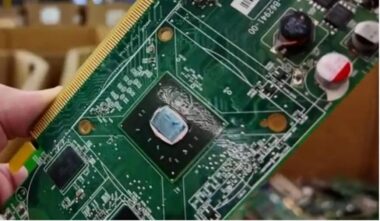 Each year, humanity leaves behind a digital trail of decay: obsolete smartphones, dismantled laptops, charred circuit boards. According to a 2024 United Nations report, the world generated 62 million metric tons of electronic waste in 2022—an 82% increase from just a decade earlier. The number is alarming, but also paradoxical: hidden within these heaps of discarded technology lies one of civilization’s most valuable resources—gold, often in concentrations higher than those found in mined ore.
Each year, humanity leaves behind a digital trail of decay: obsolete smartphones, dismantled laptops, charred circuit boards. According to a 2024 United Nations report, the world generated 62 million metric tons of electronic waste in 2022—an 82% increase from just a decade earlier. The number is alarming, but also paradoxical: hidden within these heaps of discarded technology lies one of civilization’s most valuable resources—gold, often in concentrations higher than those found in mined ore.
At Cornell University, a research team led by Associate Professor Alireza Abbaspourrad has developed a method that may transform our approach to recycling electronics. Their innovation is more than just an improvement—it is a reimagining of extraction itself. Instead of using toxic chemicals like cyanide, the team has introduced an organic compound that acts like a sponge—selectively absorbing gold ions while leaving other metals untouched. According to their findings, nearly complete gold recovery is now possible from the microcomponents embedded across millions of devices, from CPUs to memory chips.
“From one million used mobile phones, we can extract between 70 to 85 pounds of gold,” Abbaspourrad explains. This isn’t science fiction—it’s chemistry. E-waste is, in fact, richer in gold than raw ore. The difference lies not in material but in perception: can we learn to see garbage as a strategic resource?
One company that already does is eWorks, based in Freeport, New York. Under the leadership of CEO Mark Wilkins, they don’t just dismantle electronics—they redefine them. “Our mission is not just environmental sustainability,” Wilkins says, “but social empowerment.” Nearly 48% of his workforce consists of individuals with disabilities, trained in the precise skills needed to handle, disassemble, and sort electronic components. This isn’t charity—it’s structured, productive employment.
All of this unfolds amid a broader global crisis. According to the Global E-Waste Monitor 2024, less than 25% of the world’s electronic waste is formally recycled. The rest—tens of millions of tons—is burned, buried, or left to leach toxic metals into the soil and water systems that future generations will depend on.
But herein lies the opportunity. If gold can now be recovered cleanly, cheaply, and at scale, the implications reach beyond recycling—they touch the very structure of our material economy. In this model, waste becomes capital, and recycling becomes a new kind of mining—one without explosions, tunnels, or ecological devastation.
Cities of the future may not rise from oil fields, but from warehouses of discarded electronics. And that shift has already begun—not in speculative fiction, but in a laboratory where an organic sponge is quietly selecting atoms of gold from the ruins of the digital age.
